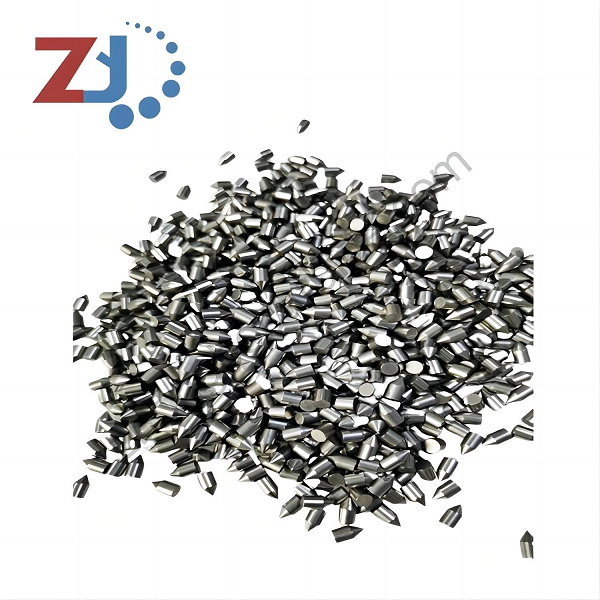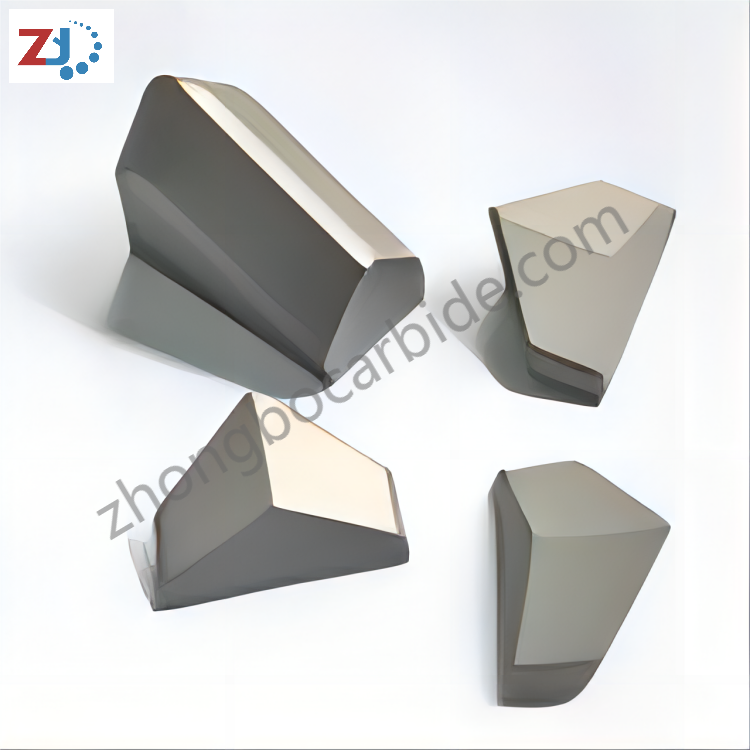Have you ever wondered how cutting tools are able to slice through material with such ease? Well, the secret lies in the type of saw tips that are used. Let's explore the differences between carbide and steel saw tips, and why they play a crucial role in the cutting process.
When it comes to saw blades, the saw tips are like the superheroes of the cutting world. They are designed to withstand the tough job of cutting through various materials, making them essential components of any cutting tool.
Carbide and steel saw tips are the two main types used in cutting tools, each with its own unique set of qualities that make them ideal for specific cutting tasks. So, strap in and get ready to learn all about the fascinating world of saw tips!
What Makes Saw Tips So Cool?
When it comes to making saw blades super powerful, it all starts with the material used for the tips. Let’s dive into the details of what makes carbide saw tips and steel saw tips so cool.
1.Carbide Saw Tips Explained
Carbide is like the superstar of cutting tools. It’s a tough, strong material that can handle some serious cutting action. That’s why carbide saw tips are often found in saw blades for heavy-duty tasks, like slicing through thick metal or hardwood. They’re like the tough superheroes of the saw world!
2.Why Steel Saw Tips are Important
Now, steel saw tips might not be as fancy-sounding as carbide, but they have their own amazing strengths. Steel saw tips are great for precision cutting jobs, where accuracy and smoothness are crucial. They’re like the precise ninjas of the cutting world, silently and smoothly getting the job done.
The Secret Behind Cutting Super Fast
Have you ever wondered why some saw blades can slice through materials super fast while others seem to take forever? Well, the secret lies in the saw tips! Cutting efficiency is a fancy way of saying how fast and smoothly a saw blade can cut through something. The type of material used for the saw tip plays a huge role in this.
Imagine a superhero with a super sharp sword versus one with a dull one. The hero with the sharp sword can cut through anything quickly and effortlessly, right? Well, it's the same idea with saw blades! Different types of saw tips determine how efficient the cutting process will be.

1.Tough Tips That Last Long
Now, here's where saw tip durability comes into play. Something that is durable means it can last a long time without breaking or getting worn out. So, if a saw tip is super tough and durable, it means it can withstand a lot of cutting before it needs replacing.
Just like how a tough shield protects a warrior from getting hurt, a durable saw tip allows the saw blade to keep cutting through tough materials without wearing out quickly. This durability ensures that the saw blade can work efficiently for a long time.
2.Comparing Carbide and Steel
Now that we’ve learned about carbide and steel saw tips, let’s compare these two superheroes of the cutting world. Carbide saw tips are like the speedy sprinters of the track, quick and efficient in making cuts. On the other hand, steel saw tips are more like the marathon runners, lasting longer and tackling tougher materials.
Imagine you have a project where you need to make hundreds of precise cuts quickly. In this case, carbide saw tips would be your go-to heroes because of their cutting speed and efficiency. But if you're working on a project that involves cutting through extremely tough materials like rocks or thick metal, then steel saw tips would be the better choice due to their durability and strength.
Both carbide and steel saw tips have their own strengths and weaknesses, so it all comes down to understanding your cutting needs and choosing the right tool for the job. Just like how different superheroes have unique powers for different missions, carbide and steel saw tips have their own special qualities to help you conquer your cutting tasks.
Getting the Best Cut Every Time
Have you ever wondered why some saws just seem to effortlessly glide through wood, while others struggle to make a clean cut? It all comes down to one important factor – the saw blade performance. And guess what? The key to a saw blade performing at its best lies in the type of saw tip it's equipped with!
Think of saw tips as the superheroes of the cutting world. They are the small but mighty parts of the saw blade that make all the difference in how well it can cut through various materials. Whether it's carbide saw tips or steel saw tips, each type brings its own unique strengths to the table.
When a saw blade has the right type of saw tip for the job, it will be able to make precise and efficient cuts every time. Imagine being able to effortlessly slice through wood, plastic, or metal with just a simple push of a saw – that's the magic of having the best saw blade performance!
Next time you see a saw in action, pay attention to how smoothly it cuts through different materials. Chances are, it's all thanks to the superpowers of its saw tips, ensuring that you get the best cut every time!

Saw Tip Superheroes
As we've journeyed through the world of cutting tools, we've discovered some true superheroes - carbide and steel saw tips! These little tips might seem small, but they play a massive role in making sure your saw works like magic. Let's dive into what makes carbide and steel saw tips so special.
Carbide is a super tough and strong material that's perfect for making saw tips. These tips can handle cutting through tough materials like a champ. So, when you need something really strong to cut through hard stuff, carbide saw tips are the way to go!Steel saw tips might not be as tough as carbide, but they have their own superpowers. They're great for making precise cuts in softer materials. When you need a delicate touch, steel saw tips are your best buddies.
By choosing the right saw tip for the job, you can make cutting tasks easier and more efficient. Carbide and steel saw tips each have their own strengths, just like real superheroes!
Frequently Asked Questions
1.Why do different saws have different types of tips?
Just like how different tools are made for different jobs, saws also need to have the right kind of tips to cut through specific materials efficiently. The material used for the tips determines how well they can handle different tasks. Carbide saw tips are super tough and great for tough materials like hardwood, while steel saw tips are good for softer materials. So, saws need different tips to excel at cutting different things.
2.Can I switch my saw's tips if I want to cut something else?
Depending on what material you need to cut, you can switch the tips on your saw to match the job. If you're working with something really tough, you might want to swap in some carbide tips. And if your next project involves softer materials, steel tips might be the way to go. Just make sure to follow the manufacturer's instructions carefully when swapping out saw tips!
3.How do I know when to replace my saw’s tips?
Keeping an eye on the wear and tear of your saw tips is essential. Once your saw tips start chipping or wearing down, it's time to replace them. Dull or damaged tips can affect the quality of your cuts and even slow down your work. Regular maintenance and checking the condition of your saw tips is key to keeping your saw working efficiently and cutting like a champ!
























